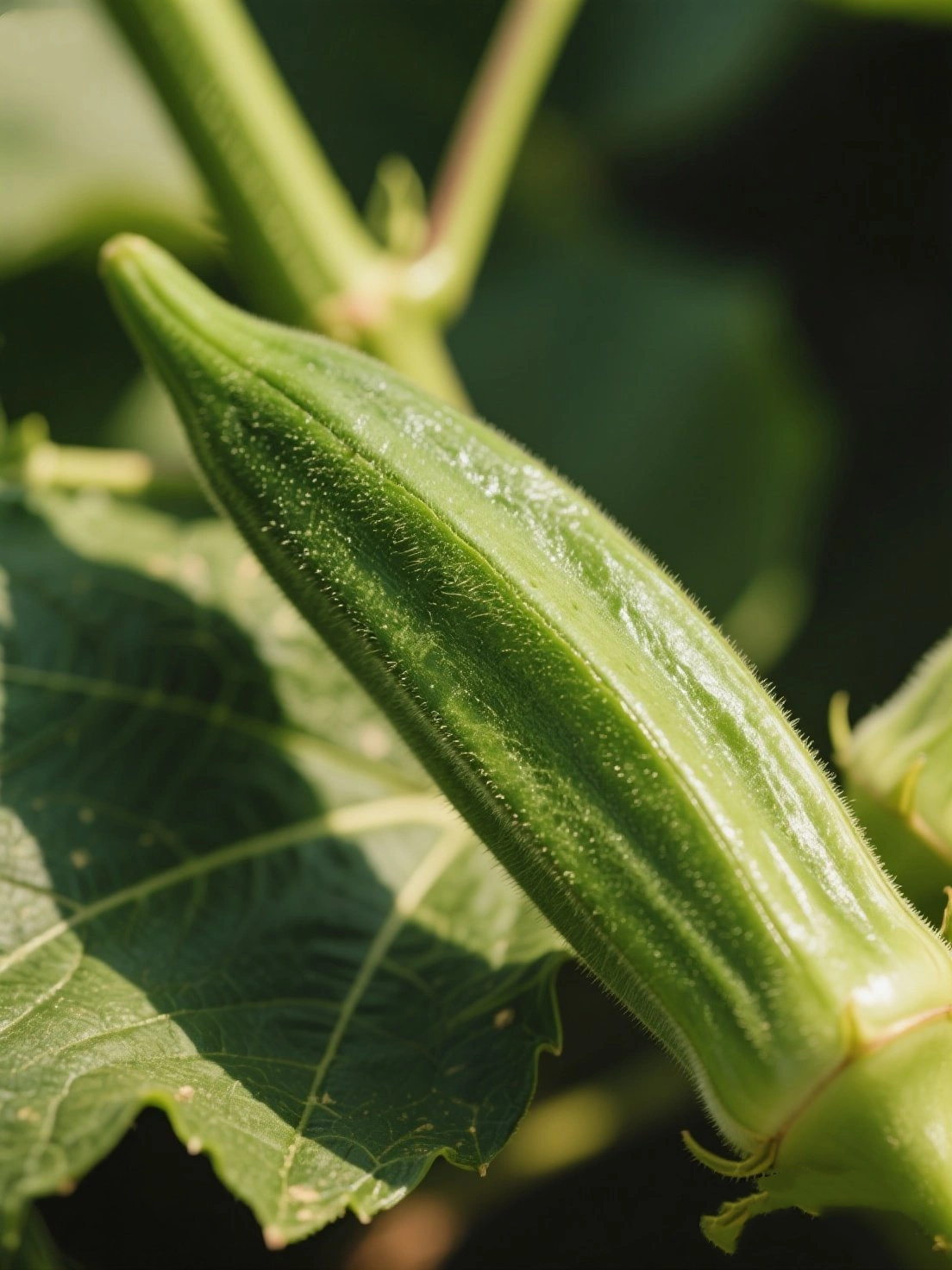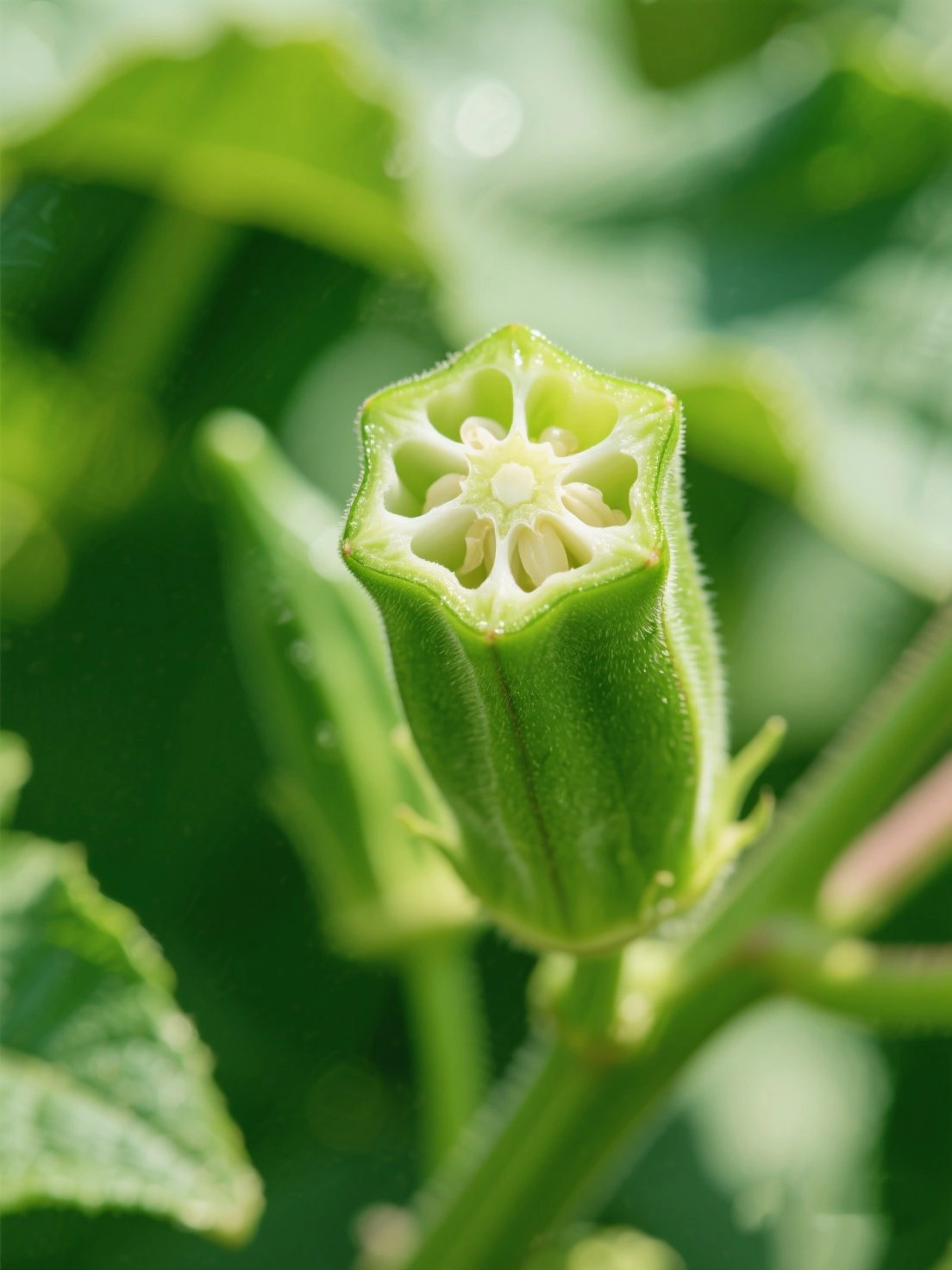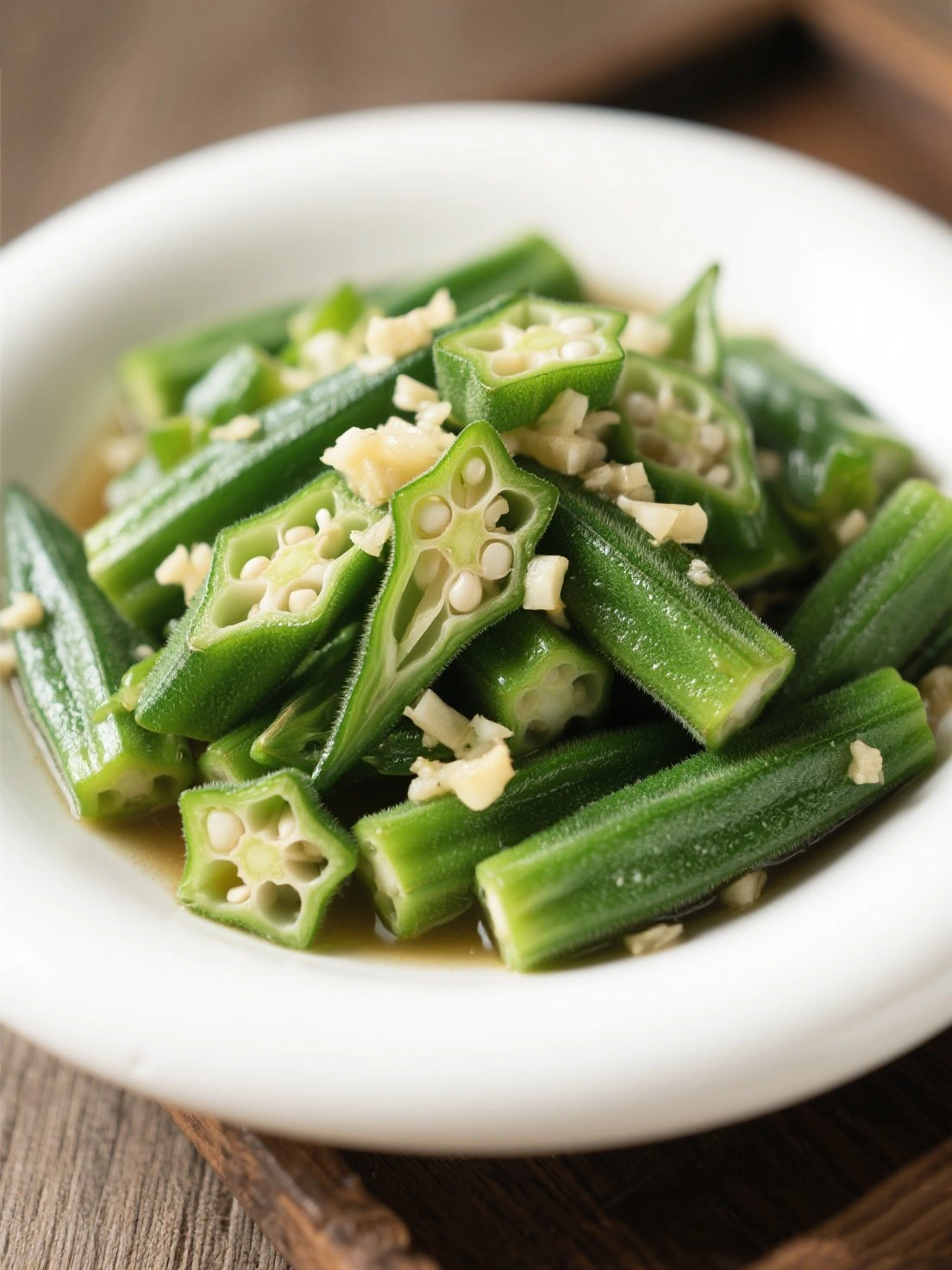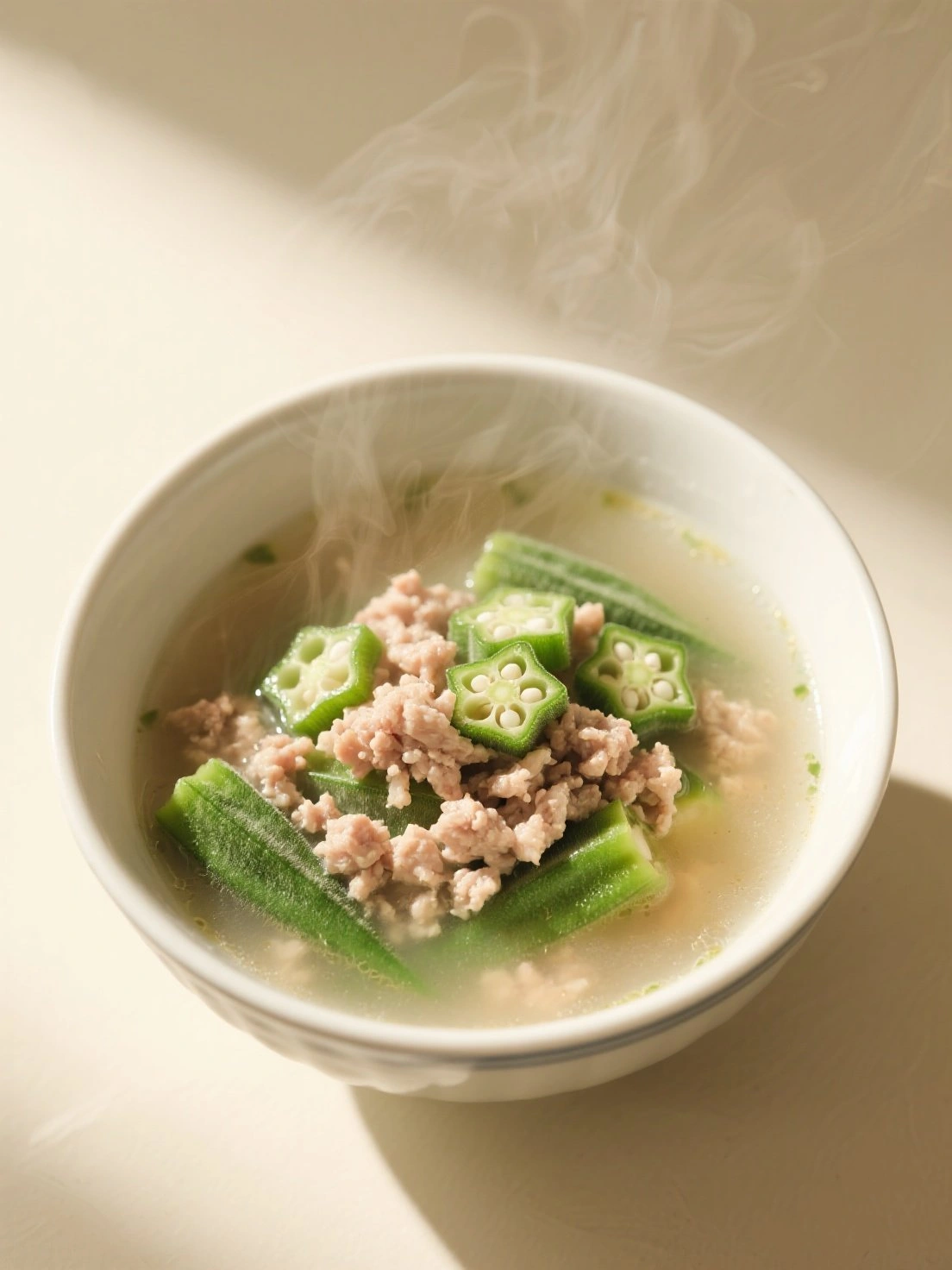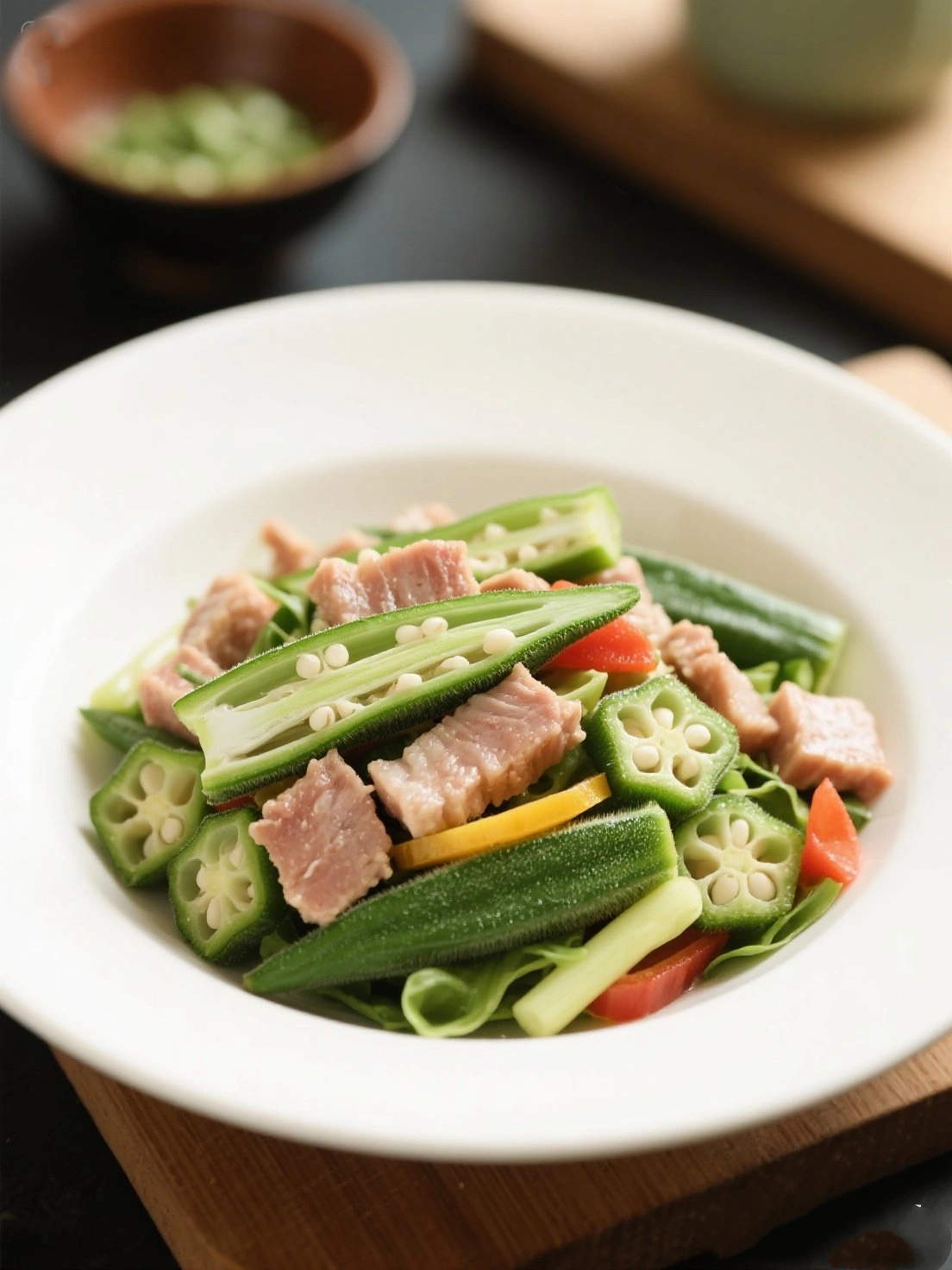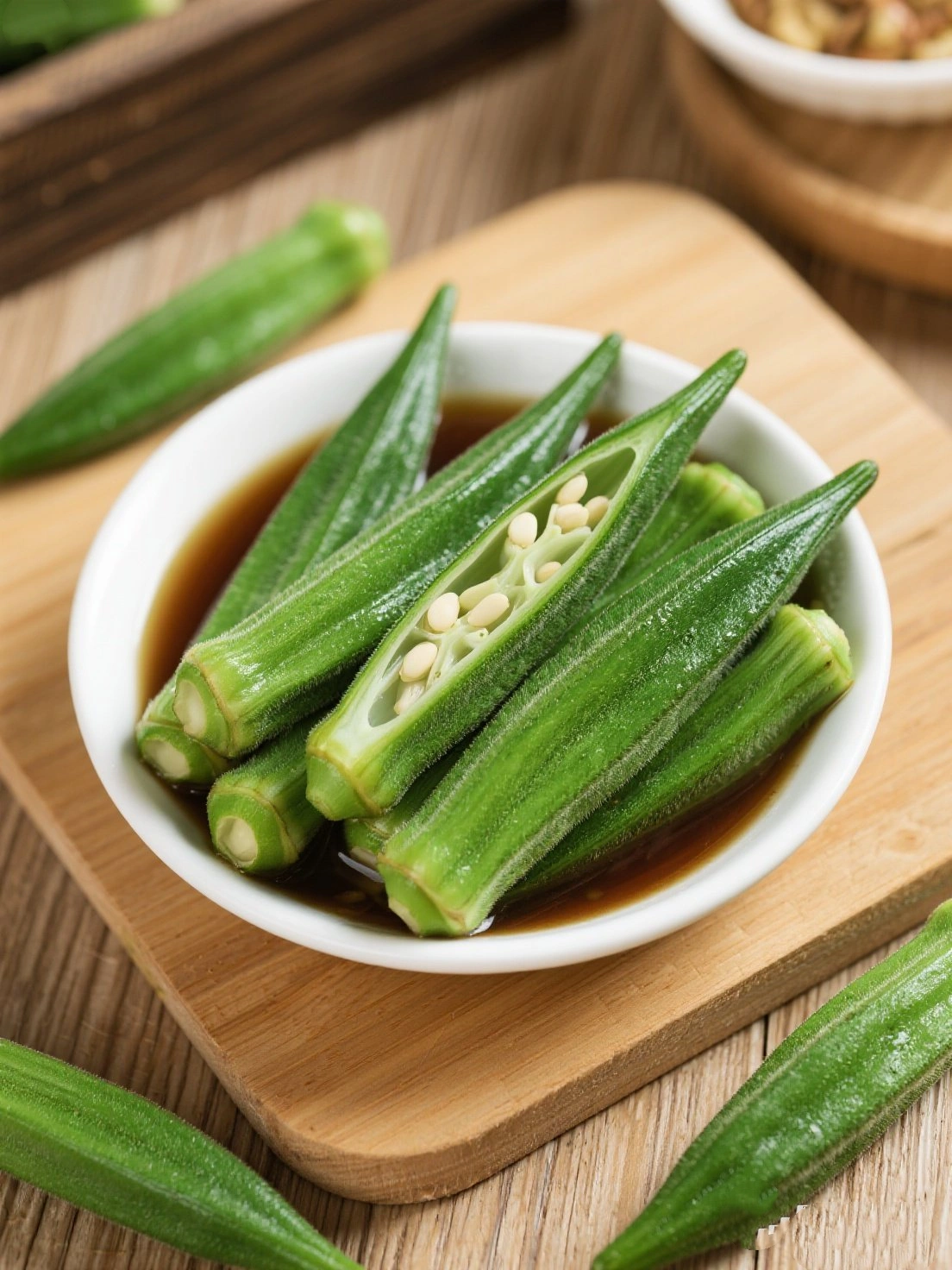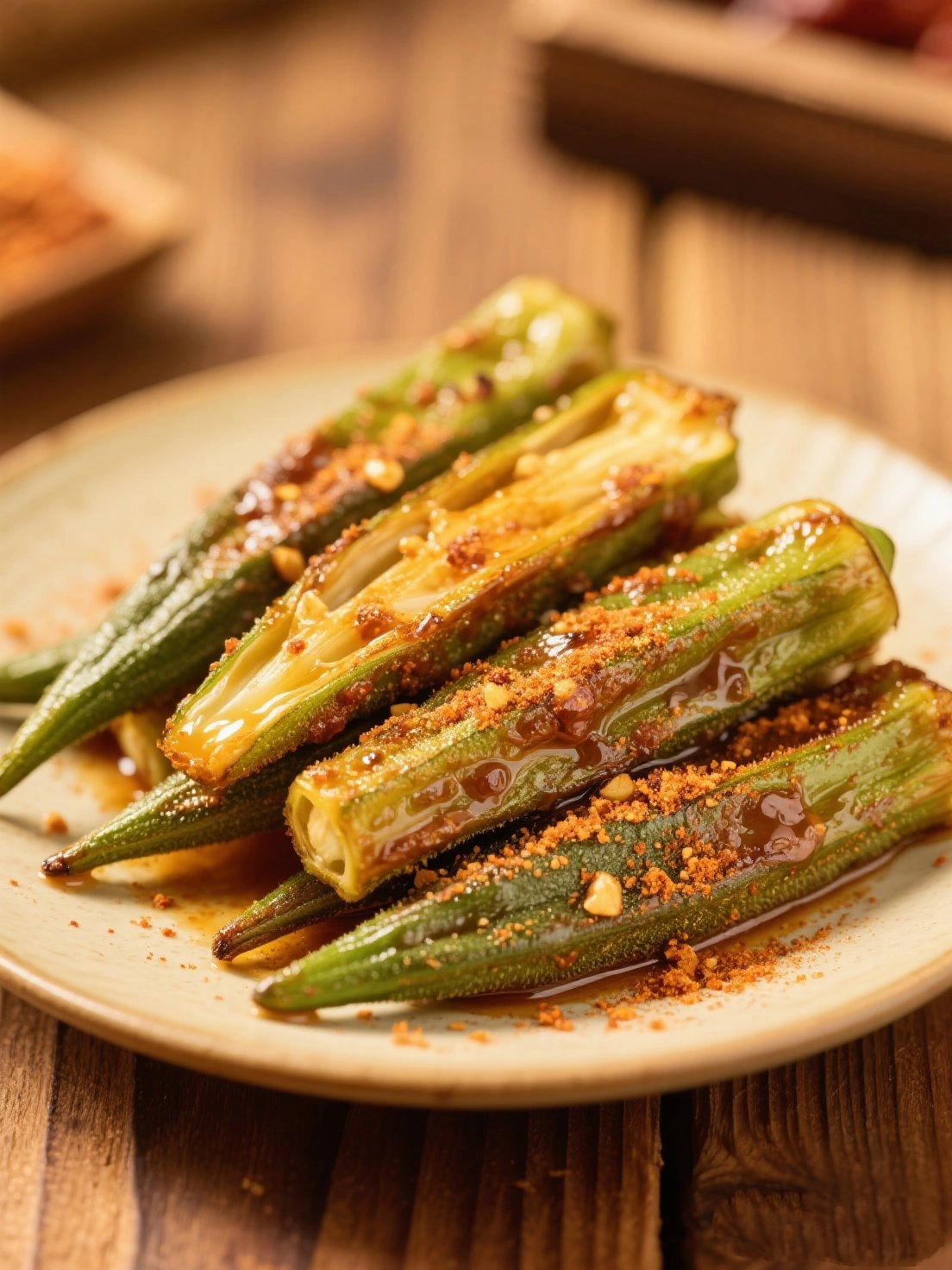Okra (Abelmoschus esculentus) in Chinese, is believed to have originated in Ethiopia around 2000 BC. It spread to North Africa, the Middle East, and India via trade routes, and was brought to the Americas by enslaved Africans in the 17th century. In China, okra became popular in recent decades as its health benefits became widely recognized.
In Traditional Chinese Medicine, okra is considered cooling and moistening. It's used to tonify yin, clear heat, promote diuresis, and lubricate the intestines. The viscous juice is particularly valued for its ability to nourish the stomach and protect mucous membranes. Modern TCM practitioners recommend okra for diabetes management, digestive issues, and respiratory conditions with dry cough.
Today, India is the world's largest okra producer, followed by Nigeria and China (with major production in Guangdong and Hainan provinces). The vegetable thrives in warm climates and is celebrated globally for its unique texture, nutritional density, and versatility in cuisines from Southern American gumbo to Indian bhindi masala.
